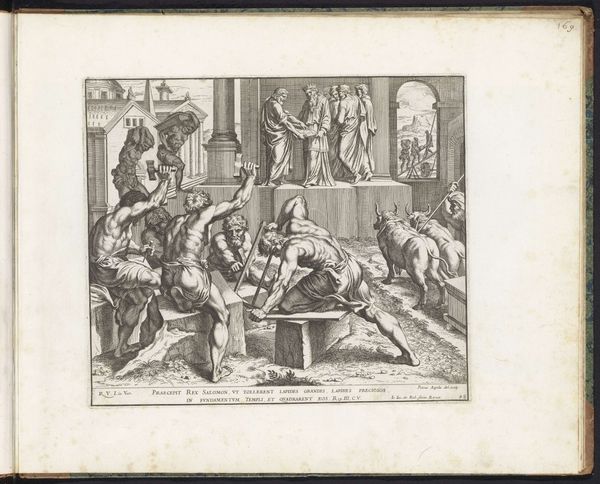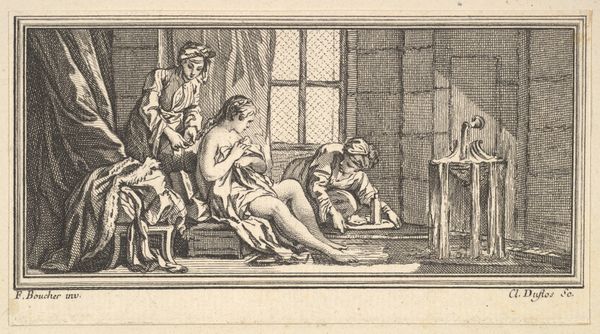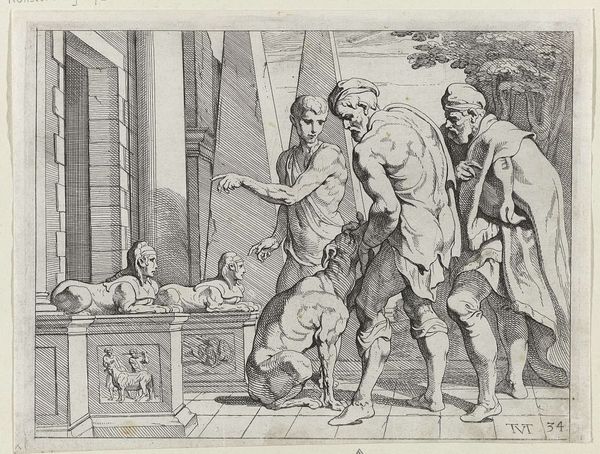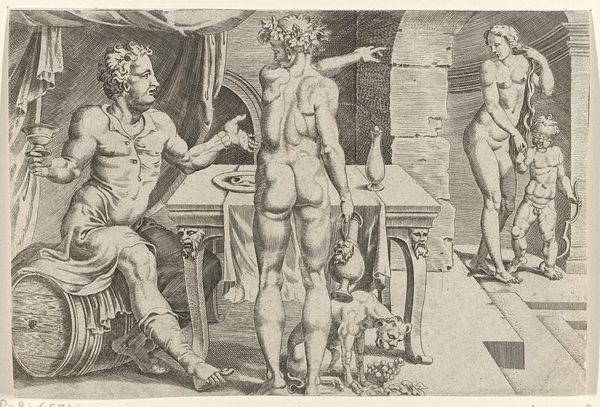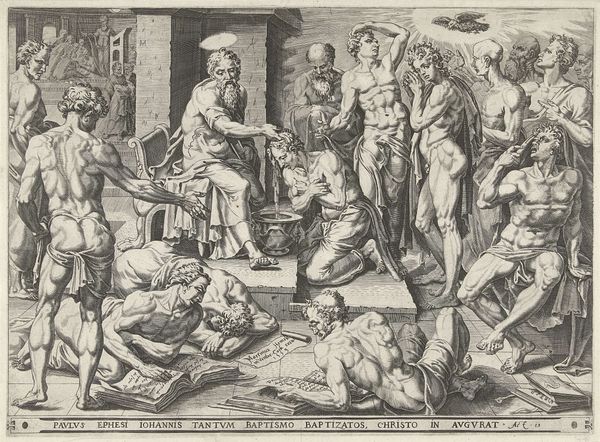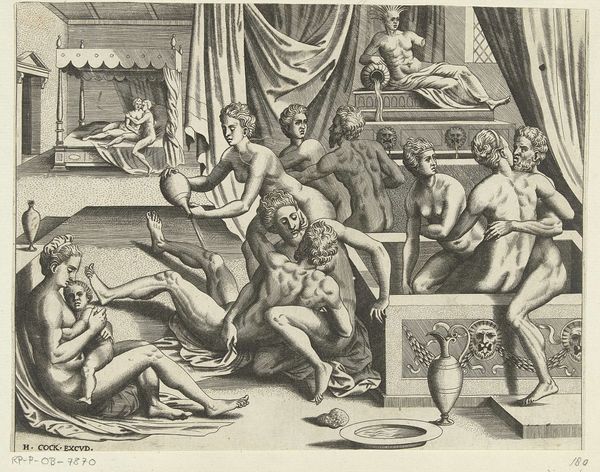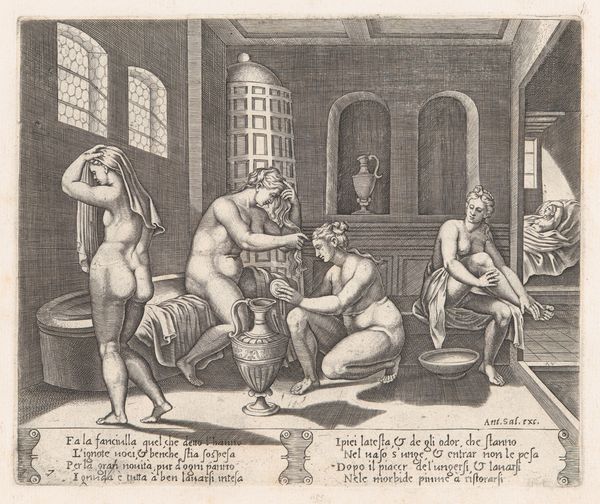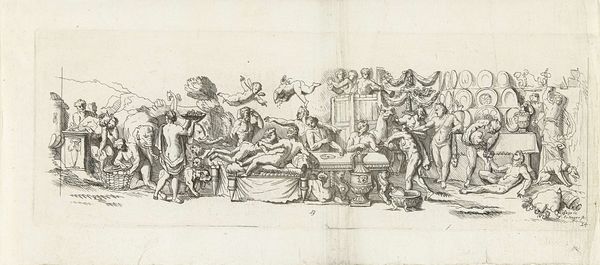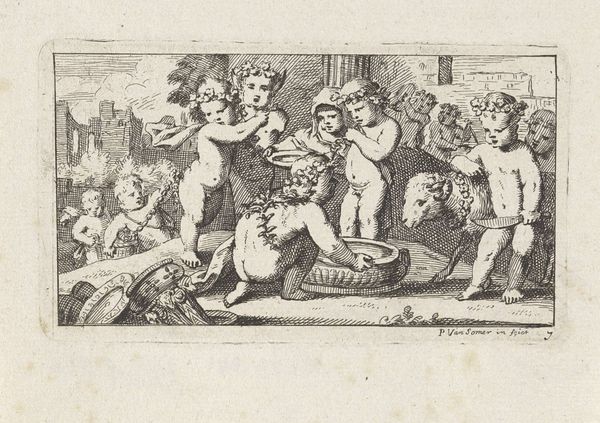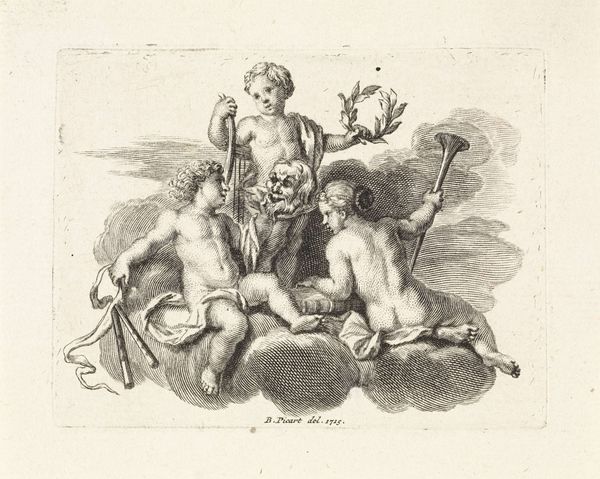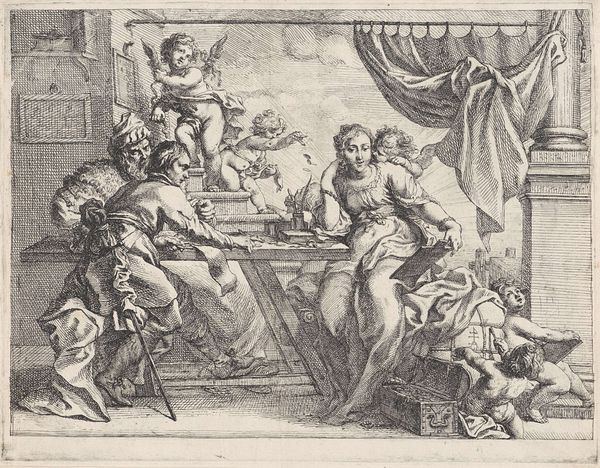
print, engraving
#
allegory
#
baroque
# print
#
figuration
#
history-painting
#
nude
#
engraving
Dimensions: height 194 mm, width 254 mm
Copyright: Rijks Museum: Open Domain
Curator: Welcome, everyone. We’re looking at Theodoor van Thulden’s engraving, “Odysseus in het paleis van Circe,” created sometime between 1632 and 1633. What’s your initial reaction? Editor: There’s a distinct tension, isn’t there? All those lines, the stark contrasts… It’s a disturbing scene, almost dreamlike. The figures seem caught in a moment of transformation, maybe even trapped. Curator: Indeed. Thulden, who often collaborated with Rubens, captured a key episode from Homer's Odyssey here. This engraving depicts Odysseus' encounter with the sorceress Circe, who famously turned his companions into animals. It's an allegory about temptation and the loss of humanity, reflecting broader societal anxieties about moral decline. Editor: It’s intriguing how Thulden uses line to create space, almost stage-like, to set off different phases of this scene. In the background we see men transforming, acting beastly— crawling on stairs. In the foreground Odysseus seems conflicted; he's caught in this strange composition, unsure where to look. Curator: Consider the historical context. In 17th century Europe, depictions of classical mythology were often veiled commentaries on contemporary power structures and social dynamics. Circe, with her ability to transform men, symbolizes the seductive but corrupting influence of power. This speaks to a society grappling with the excesses of its own elites and their effects. Editor: Absolutely, I agree with your read of social power at play. But, if we home in on Circe and Odysseus as the center of the picture, their posture is telling too, with Odysseus seemingly powerless and the watchful gazes of others surrounding him. His nakedness as a contrast to the heavily clothed courtiers of Circe gives the encounter another reading related to vulnerability and deceit. Curator: True. And let's not forget the print medium itself. Engravings were often produced for a wider audience, facilitating the distribution of visual ideas. The "Odysseus" story, thus, serves not only as an aesthetic artifact but also as a powerful piece of social messaging for the aspiring bourgeois society. Editor: Right. Now that I’m noticing more details, that subdued yet disturbing quality about the work has shifted. The deeper visual dive helped shift that initial impression to something more historically situated. Curator: And on the other hand, the historical analysis prompts us to revisit the initial formal readings of the artwork. Editor: A true dialogue, then! Thank you.
Comments
No comments
Be the first to comment and join the conversation on the ultimate creative platform.
